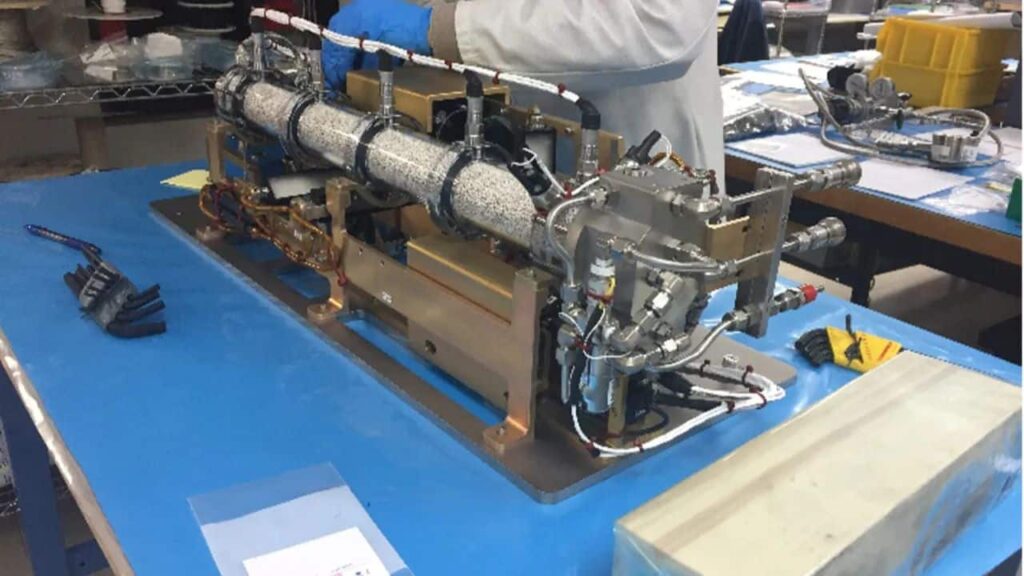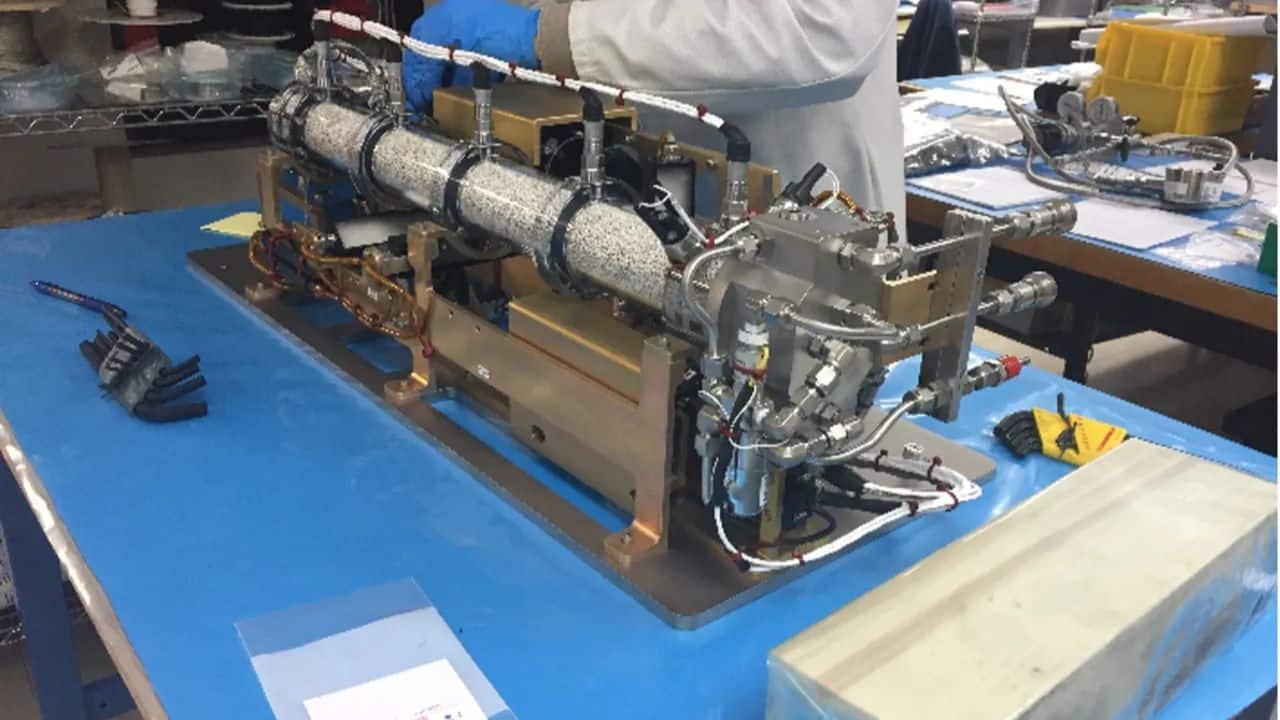NASA, space mission, Northrop Grumman, Cygnus spacecraft, SpaceX Falcon 9, International Space Station, microgravity research, plant growth in space, water purification, material science, space exploration, ISS experiments
Explore how NASA’s latest mission aboard Northrop Grumman’s Cygnus spacecraft is pushing the boundaries of science and exploration. Discover groundbreaking experiments in microgravity research, including plant growth, water purification, and material science, paving the way for future space missions and benefiting life on Earth.

NASA Sends More Science to Space: Strides for Future Exploration
On August 4th, Northrop Grumman’s Cygnus spacecraft, carrying nearly 8,500 pounds of supplies, launched atop a SpaceX Falcon 9 rocket from Space Launch Complex 40 at Cape Canaveral Space Force Station in Florida. This mission, known as Northrop Grumman 21st cargo resupply mission (NG-21), aims to pioneer scientific discoveries in the unique environment of microgravity aboard the International Space Station (ISS). The experiments aboard the spacecraft encompass biological and physical investigations, including studies on plant growth, water purification, and material characteristics.
Grass Growth and Bio-Regenerative Support
One of the significant scientific investigations on this mission focuses on the cultivation of plants in space, which is crucial for developing bio-regenerative life support systems. In space, the absence of gravity affects photosynthesis, the process by which plants convert light energy into chemical energy, producing oxygen and food. The C4 Photosynthesis in Space Advanced Plant Experiment-09 is designed to study how two types of grasses, Brachypodium distachyon and Setaria viridis, adapt to the microgravity and high carbon dioxide levels in space.
These grasses utilize different approaches to photosynthesis, and understanding their responses in space can pave the way for more effective integration of plants in both terrestrial and extraterrestrial environments. Initially planned for NASA’s SpaceX 30th cargo resupply mission, this experiment was reassigned to NG-21 to ensure timely research advancements.
Water Purification and Gravity
Another critical experiment aboard NG-21 is the Packed Bed Reactor Experiment – Water Recovery Series. This study aims to explore the hydrodynamics of two-phase flow (a mixture of nitrogen gas and water) in microgravity conditions. Researchers will analyze pressure drops, flow regimes, and flow instability in various filters and openings, which are crucial for fluid systems used in life support, water purification, and recovery processes.
The findings from this experiment will be instrumental in developing design tools and correlations for predicting pressure drops across various prototypes. These insights are essential for future lunar and Martian missions, where efficient water recovery and purification systems are vital for the sustainability of human life.
Removing Impurities in Melted Materials
The Electrostatic Levitation Furnace–4 experiment, led by the Japan Aerospace Exploration Agency (JAXA), is also part of the NG-21 mission. This experiment involves 20 new test samples and aims to establish guidelines for measuring the thermophysical properties of various materials at temperatures exceeding 2,000 degrees Celsius.
Transforming raw materials from liquid to solid forms typically requires a crucible, which heats and holds the substance. However, this process often leads to chemical reactions between the substance and the crucible, introducing impurities. The Electrostatic Levitation Furnace addresses this issue by levitating the sample, eliminating the need for a crucible and thus preventing contamination.
More Materials Science: Getting to the Core
The Electromagnetic Levitator, an experiment facilitated by the European Space Agency (ESA), is celebrating a decade aboard the ISS. This facility enables scientists to conduct materials research on alloys in a microgravity environment, providing a deeper understanding of the processes leading up to solidification and phase changes.
By studying these fundamental physics principles, researchers can develop new and more reliable materials for various applications, including 3D printing. The insights gained from these experiments could significantly advance the manufacturing industry, offering improved materials and techniques.
The Role of NASA’s Biological and Physical Sciences Division
NASA’s Biological and Physical Sciences Division is at the forefront of scientific discovery, utilizing space environments to conduct investigations that are not possible on Earth. Studying biological and physical phenomena under extreme conditions helps researchers advance the fundamental scientific knowledge required to explore farther and stay longer in space. These discoveries also benefit life on Earth by providing new insights and technologies.
Broader Impacts of Space Research
The research conducted on the ISS not only aims to enhance our understanding of space and improve life support systems for astronauts but also has significant implications for Earth. For instance, the advancements in water purification systems developed for space missions can be adapted to provide clean water in remote or disaster-stricken areas on Earth.
Furthermore, the insights gained from studying plant growth in microgravity can lead to more resilient crop varieties and improved agricultural practices, ensuring food security in the face of changing climate conditions. The development of new materials and manufacturing techniques from the ISS experiments can revolutionize industries, leading to stronger, lighter, and more efficient products.
Future Exploration Missions
As NASA continues to push the boundaries of space exploration, the research conducted aboard missions like NG-21 becomes increasingly important. These experiments lay the groundwork for future missions to the Moon, Mars, and beyond. By understanding how biological and physical systems operate in space, scientists can design better life support systems, create more efficient propulsion methods, and develop sustainable habitats for long-duration missions.
Collaborations and International Efforts
The NG-21 mission highlights the collaborative nature of space exploration. With contributions from international partners like JAXA and ESA, these missions bring together the best minds from around the world to tackle the challenges of space exploration. This international cooperation not only accelerates scientific discovery but also fosters a sense of global unity and shared purpose.
Educational and Inspirational Value
The scientific endeavors aboard the ISS also have significant educational and inspirational value. They engage students and educators around the world, sparking interest in STEM (Science, Technology, Engineering, and Mathematics) fields. By showcasing the possibilities of space research, NASA and its partners inspire the next generation of scientists, engineers, and explorers.
Conclusion
The Northrop Grumman 21st cargo resupply mission is a testament to the relentless pursuit of knowledge and innovation that drives NASA and its international partners. By conducting cutting-edge research in microgravity, this mission aims to unlock new scientific discoveries that will benefit humanity both in space and on Earth.
From advancing our understanding of plant growth and water purification in space to developing new materials and manufacturing techniques, the experiments aboard NG-21 pave the way for future exploration and sustainable living beyond our planet. As we continue to explore the final frontier, the knowledge and technologies gained from these missions will be crucial in ensuring the success and sustainability of future space endeavors.
Read More
